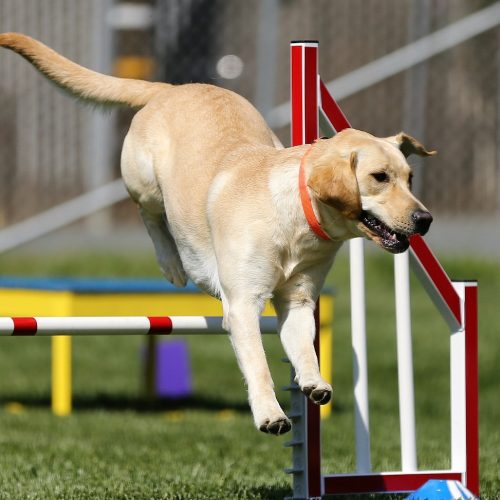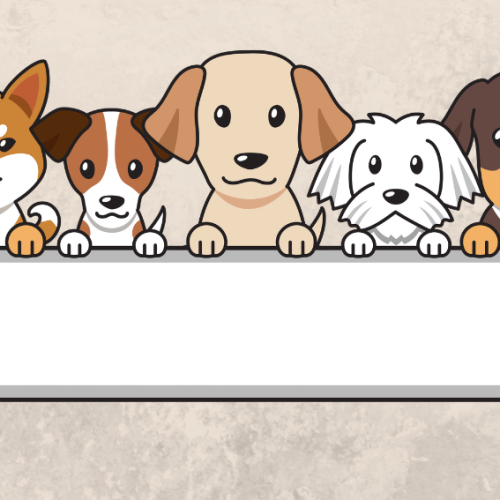The Labrador Retriever, known for its friendly nature and versatility, has long been a favorite among dog enthusiasts. However, the landscape of Labrador breeding and ownership is evolving, influenced by societal changes, technological advancements, and shifting preferences. This article explores the latest trends in Labrador Breeding, dog ownership, focusing on Labradors, and examines the changing dynamics in breeding and ownership practices.
Current Dog Breeding and Ownership Practices

Popularity of Labradors
Labradors have consistently been among the most popular dog breeds worldwide. Their intelligence, adaptability, and gentle temperament make them ideal pets for families, individuals, and working environments. Labradors are known for their friendly demeanor and versatility, making them suitable for various roles such as service dogs, therapy dogs, and even working dogs in roles such as search and rescue. This popularity stems from their innate ability to connect with humans, displaying a unique blend of loyalty and playfulness that appeals to a broad audience.
Ethical Breeding Practices
In recent years, there has been a significant push towards ethical breeding practices. Responsible breeders prioritize the health and well-being of the dogs, avoiding overbreeding and ensuring proper genetic screening. This trend is expected to continue, with more breeders adhering to ethical standards to prevent genetic disorders and promote healthier bloodlines. Ethical breeding practices involve comprehensive health checks, ensuring that both the sire and dam are free from hereditary diseases.
Breeders are increasingly using genetic testing to screen for common Labrador ailments such as hip dysplasia, elbow dysplasia, and various eye conditions. This commitment to health not only enhances the quality of life for the dogs but also fosters trust and transparency between breeders and potential owners. The shift towards ethical breeding is also supported by various kennel clubs and breeding organizations, which are implementing stricter regulations and guidelines to ensure the well-being of the breed.
Adoption and Rescue Initiatives
The trend of adopting Labradors from shelters and rescue organizations is on the rise. Potential owners are becoming more aware of the benefits of adopting dogs in need of homes, leading to an increase in rescue and adoption rates. This shift not only provides homes for many Labradors but also alleviates the pressure on breeders to produce more puppies. Adoption initiatives are driven by increased awareness about the plight of homeless animals and the benefits of giving a second chance to dogs in need.
Many rescue organizations specialize in Labradors, providing thorough health checks and behavioral assessments to ensure the dogs are ready for new homes. Additionally, the rise of social media has played a significant role in promoting adoption, with numerous platforms dedicated to showcasing adoptable dogs and connecting them with potential owners. Adopting a Labrador not only saves a life but also offers the rewarding experience of providing a loving home to a dog that truly needs it.
Changing Ownership and Breeding Trends

Technological Advancements
Technology is playing a crucial role in shaping the future of Labrador breeding and ownership. From genetic testing to advanced veterinary care, technology is helping breeders produce healthier puppies and providing owners with tools to better care for their pets.
Genetic Testing and Health Screening
Genetic testing has become a standard practice among responsible breeders. By identifying potential health issues early, breeders can make informed decisions to reduce the risk of hereditary diseases. This trend is expected to grow, ensuring healthier Labradors for future generations. Genetic testing allows breeders to identify carriers of specific genes that may cause health problems in future litters. This proactive approach helps in creating breeding programs that minimize the risk of passing on genetic disorders.
For Labrador Retrievers, common tests include screenings for Progressive Retinal Atrophy (PRA), Exercise-Induced Collapse (EIC), and Centronuclear Myopathy (CNM). By selecting breeding pairs that are clear of these conditions, breeders can significantly reduce the incidence of these issues in the breed. Moreover, genetic testing provides valuable information that can be shared with prospective owners, offering them peace of mind regarding the health and longevity of their new pet.
Smart Collars and Pet Trackers
Smart collars and pet trackers are becoming popular among Labrador owners. These devices monitor a dog’s activity, health, and location, providing valuable data to ensure their well-being. As technology advances, these devices will become more sophisticated, offering even more benefits to dog owners. Smart collars can track various metrics such as heart rate, activity levels, and even sleep patterns, allowing owners to monitor their dog’s health in real-time.
These devices often come with GPS tracking, which is particularly useful for owners of active Labradors who may wander off during outdoor adventures. The data collected by smart collars can be synced with mobile apps, providing a comprehensive overview of the dog’s health and activity. This technology enables early detection of potential health issues and helps owners maintain an optimal exercise regimen for their pets. As these devices continue to evolve, they are expected to offer even more advanced features, such as integrating with veterinary care systems to provide seamless health monitoring and care.
Holistic Health and Nutrition
Owners are increasingly prioritizing the holistic health and nutrition of their Labradors. This trend involves a focus on natural diets, regular exercise, and mental stimulation to promote overall well-being.
Natural Diets
Natural and raw diets are gaining popularity among Labrador owners. These diets are believed to offer numerous health benefits, including improved digestion, shinier coats, and increased energy levels. As more owners become aware of the advantages, the demand for high-quality, natural dog food is expected to rise. Natural diets typically consist of whole foods such as fresh meats, vegetables, and fruits, avoiding artificial additives and preservatives.
Proponents of raw feeding argue that it mimics the ancestral diet of dogs, leading to better overall health. While transitioning to a natural diet, it is crucial for owners to consult with veterinarians to ensure that the diet is balanced and meets all nutritional requirements. The market for natural and organic dog food has expanded significantly, with numerous brands offering a wide range of products tailored to different life stages and health needs of Labradors. This trend reflects a growing awareness of the importance of diet in maintaining the long-term health and vitality of pets.
Mental Stimulation and Enrichment
Mental stimulation is as important as physical exercise for Labradors. Owners are investing in puzzle toys, training sessions, and interactive games to keep their dogs mentally engaged. This trend reflects a broader understanding of the importance of mental health in pets. Labradors are highly intelligent dogs that thrive on mental challenges. Providing mental stimulation helps prevent boredom and reduces the likelihood of behavioral issues such as excessive barking or destructive chewing.
Interactive toys and puzzle feeders are designed to engage a dog’s problem-solving skills, providing both entertainment and mental exercise. Training sessions, including obedience training and agility courses, offer structured activities that enhance a Labrador’s cognitive abilities and strengthen the bond between dog and owner. Additionally, activities such as scent work and retrieval games tap into the Labrador’s natural instincts, offering satisfying and mentally enriching experiences. As awareness of the importance of mental stimulation grows, more products and resources are becoming available to help owners keep their Labradors mentally fit and happy.
Trends in Dog Ownership

Urbanization and Small Living Spaces
The rise of urban living has influenced dog ownership trends, including those related to Labradors. While Labradors are typically larger dogs, they can adapt to apartment living with the right care and exercise regimen.
Adapting to Urban Environments
Labrador owners in urban areas are finding creative ways to meet their dogs’ exercise needs. Regular visits to dog parks, scheduled playdates, and indoor exercise routines are becoming common practices. This adaptability makes Labradors a viable option for city dwellers. Urban living often requires innovative solutions to provide adequate exercise and stimulation for Labradors.
Dog-friendly parks and recreational areas offer safe spaces for off-leash play and socialization with other dogs. Additionally, many urban areas have seen a rise in doggy daycare facilities and pet-sitting services, providing opportunities for exercise and interaction during the day while owners are at work. Indoor exercise routines, such as treadmill walks and interactive play, help keep Labradors active in smaller living spaces. The availability of dog-friendly amenities, such as pet wash stations and designated dog areas in apartment complexes, further supports the trend of owning Labradors in urban environments. As urbanization continues to grow, so too will the innovative solutions that help Labradors thrive in city settings.
Aging Population of Dog Owners
As the global population ages, so does the demographic of dog owners. Older adults are increasingly choosing Labradors as companions due to their friendly and supportive nature.
Benefits for Older Adults
Labradors can provide companionship, emotional support, and a sense of purpose for older adults. This trend is leading to more breeders focusing on producing Labradors with calm and gentle temperaments suitable for senior owners. Labradors are famous for their loyalty, and gentle disposition. These qualities make them ideal companions for older adults who might be looking for a loving and reliable pet. The presence of a Labrador can bring forth emotional comfort and reduce feelings of loneliness, particularly for seniors who live alone. Additionally, the responsibility of caring for a dog can offer a sense of purpose and routine, which is beneficial for mental and emotional well-being.
Breeders are responding to this trend by selecting for traits that make Labradors well-suited for older owners, such as lower energy levels and ease of training. Service and therapy programs are also recognizing the potential of Labradors to support older adults, providing trained dogs that assist with daily tasks and offer companionship. The benefits of owning a Labrador extend beyond emotional support, as regular walks and activities with a dog can also encourage physical exercise and social interaction, contributing to a healthier lifestyle for seniors.
Increase in Single-Person Households
The rise in single-person households has also impacted Labrador ownership trends. Single individuals are choosing Labradors for their loyalty, companionship, and protective instincts.
Catering to Single Owners
Breeders and pet care providers are tailoring their services to meet the needs of single owners. This includes offering flexible training schedules, personalized care plans, and support systems for solo pet parents. Labradors are known for their affectionate nature and ability to form strong bonds with their owners, making them a popular choice for single individuals seeking companionship. The loyalty and protective instincts of Labradors provide a sense of security and comfort for single owners. Pet care providers are recognizing the unique needs of single pet owners, offering services such as flexible training programs that fit busy schedules, pet-sitting services, and community groups that facilitate socialization for both dogs and owners.
Personalized care plans can include tailored feeding schedules, exercise routines, and training programs that address the specific needs of the dog and owner. The rise of single-person households has also led to an increase in demand for resources and support systems that help single owners manage the responsibilities of pet ownership. Online communities and local meet-up groups offer platforms for sharing experiences, advice, and support, fostering a sense of community among single Labrador owners. This trend highlights the growing recognition of the important role that Labradors play in the lives of single individuals, providing companionship, emotional support, and a sense of connection.
Conclusion
The trends in Labrador breeding and ownership are evolving, reflecting broader societal changes and advancements in technology. Ethical breeding practices, adoption initiatives, and a focus on holistic health are shaping the future of Labrador ownership. As these trends continue to develop, potential and current owners can look forward to a more informed and supportive environment for their beloved pets. By staying informed and adapting to these changes, Labrador enthusiasts can ensure a healthy and fulfilling life for their furry companions.
Frequently Asked Questions (FAQs)
Common health issues found in Labradors?
Labradors are prone to certain health issues, including hip dysplasia, elbow dysplasia, and obesity. Frequent veterinary check-ups and a healthy lifestyle can help manage these conditions.
How much exercise does a Labrador need?
Labradors require at least an hour of exercise each day. This can include walks, playtime, and mental stimulation activities.
Are Labradors good for apartment living?
Yes, with proper exercise and mental stimulation, Labradors can adapt to apartment living. It’s important to ensure they have enough space and opportunities to stay active.
What should I feed my Labrador?
A balanced diet with high-quality ingredients is essential for a Labrador’s health. Many owners prefer natural or raw diets, but it’s best to consult with a veterinarian to determine the most suitable diet for your dog.
How can I find a reputable Labrador breeder?
Look for breeders who prioritize ethical practices, perform genetic testing, and provide a healthy environment for their dogs. It’s also helpful to check reviews and ask for recommendations from other Labrador owners.









